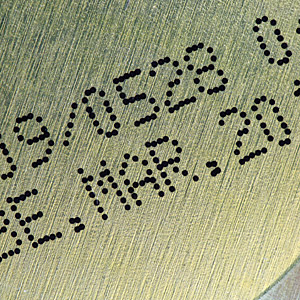 There are concerns that open-date coding of foods has increased food waste. The food industry and consumers use the dates printed on food packages to manage stock rotation from food manufacturing plants to the consumer’s kitchen. Variation in terminology associated with open dates on consumer packages can result in the disposal of good food.
There are concerns that open-date coding of foods has increased food waste. The food industry and consumers use the dates printed on food packages to manage stock rotation from food manufacturing plants to the consumer’s kitchen. Variation in terminology associated with open dates on consumer packages can result in the disposal of good food.
For some background, open-date labeling of consumer packaged foods began more than 40 years ago. The process was started to provide consumers with transparency of the shelf life of perishable foods at the time of purchase. Milk cartons were the initial product on which “sell-by” dates were imprinted. Today, open dates appear in some form on almost every consumer food package. A U.S. Department of Agriculture (USDA) Economic Research Service study conducted in 1971–1972 indicated that 60 retail food chains introduced some type of open-date labeling system. For uniformity reasons, the food industry supported the development of a model open-dating regulation in 1973.
Before 1968, closed codes on food packages were a mystery to consumers and retailers. Each company had its own system of identifying when a product was produced and when it was to come “off sale.” Open dates on food packages became a tool that store employees could use to enhance product rotation. Consumers also got involved with using this tool, not only in the store, but also in the home. The primary focus of open-date coding at that time was on product quality.
In 2005, the National Advisory Committee on Microbiology Criteria for Foods (NACMCF) recommended date marking for ready-to-eat, refrigerated foods using temperature and time as a food-safety control. The Food and Drug Administration (FDA) Food Code that regulates retail food and foodservice operations has also included open-date labeling requirements for reduced-oxygen packaged foods that are processed and packaged within those facilities.
Today, uniform open-dating regulations involve the National Institute of Standards and Technology (NIST) and the Uniform Open Dating Regulation, which defines the terms “sell-by” and “best if used by” and the manner of expressing the date. The regulation also defines the terms “perishable,” “semi-perishable” and “long shelf life” foods. Products with a sell-by date must provide one-third of the shelf life beyond the date listed for consumer use. Furthermore, the regulation restricts the sale of foods beyond the sell-by date and requires the date be clearly visible and easily readable. The Uniform Open Dating Regulation has been adopted by some states and local regulatory agencies.
Consumer surveys in recent years from the U.S. Grocery Suppliers reveal some confusion with open dating of consumer food products. Consumers are concerned with eating foods beyond the dates on the packages and view doing so as a serious health risk. Most consumers don’t understand the meaning of the dates on the packages, resulting in perfectly good food being discarded.
Take a look at the open dates on consumer packages in your operation. First, are you readily able to find the open date on the packages and is it legible? Can you determine what the date on the package really means? By observing open dates on food containers in any retail store, it’s evident that the food industry offers open dating in a wide variety of methods. These variations in open dating are why consumers may have serious concerns about the quality of food when checking the codes!
You also may find this a good time to check the rotation of foodstuffs in your own pantry. It’s time for the food industry to review their open-date coding processes for the sake of reducing unnecessary food waste.





